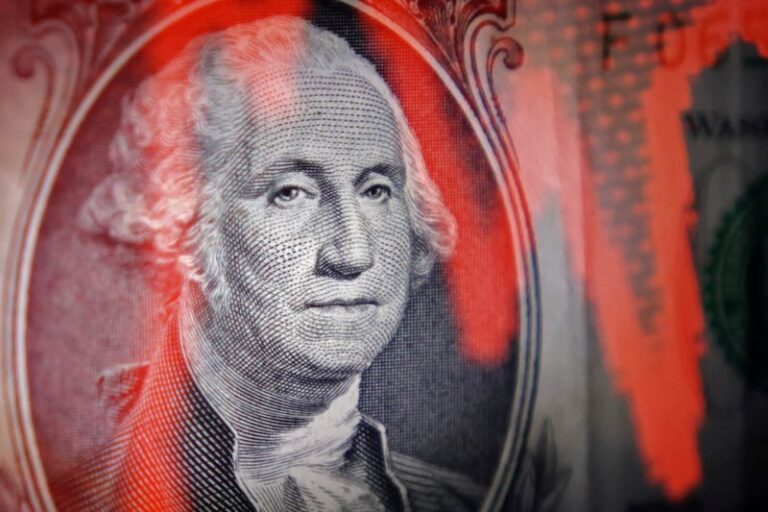By Kevin Buckland
TOKYO (Reuters) -The U.S. dollar hovered below a one-week high on Thursday and Asian stock markets were broadly mixed as investors braced for three days of potentially market-moving news from the Federal Reserve’s annual symposium in Jackson Hole.
Central bankers from around the world will attend the event, which begins later in the day, although the key focus will be Fed Chair Jerome Powell’s speech on Friday as traders look for clues on the chances of a September rate cut.
Japan’s Nikkei drooped 0.6% in the morning session, retreating further from the record peak reached on Tuesday.
Despite a tech-led selloff on Wall Street overnight, Japanese chip stocks were a mixed bag, with Advantest up 3% while Tokyo Electron dropped 2%.
South Korea’s KOSPI bounced 0.9% after dipping to a six-week low on Wednesday. Australia’s benchmark gained 0.6% and renewed an all-time high.
Mainland Chinese blue chips gained 0.5%, although Hong Kong’s Hang Seng was largely flat.
U.S. stock futures pointed lower, with Nasdaq futures sagging 0.2% and S&P 500 futures easing 0.1%. Overnight, the Nasdaq Composite slid 0.7% and the S&P 500 cash index slipped 0.2%. [.N]
“There remains a bearish skew for equities at the moment,” said Kyle Rodda, an analyst at Capital.com.
“Equity prices are beginning to reflect the risk of disappointment at Jackson Hole, with doubts circulating about whether the Fed will pivot as aggressively in the dovish direction implied by rates markets – or even pivot at all.”
Traders currently lay odds of about 80% for a quarter-point Fed rate cut on September 17, and price in a total of 52 basis points of easing over the rest of the year. This time on Wednesday, the odds for a cut next month stood at 84%.
Fed Chair Powell has said he is reluctant to cut rates because of expected tariff-driven price pressures this summer.
Minutes out overnight from the Fed’s July gathering, when policymakers voted to keep rates steady, suggested that Fed Vice Chair for Supervision Michelle Bowman and Governor Christopher Waller were alone in pushing for a rate cut at the meeting.
Traders ramped up bets for a September cut following a surprisingly weak payrolls report at the start of this month, and were further encouraged after consumer price data showed limited upward pressure from tariffs.
However, a hotter-than-expected producer price reading last week complicated the policy picture.
Traders aren’t looking at macroeconomic data as the only potential influencer of monetary policy direction, with President Donald Trump again exerting pressure on the central bank overnight.
Read More: Dollar drifts, Asian stocks mixed as markets brace for Jackson Hole



